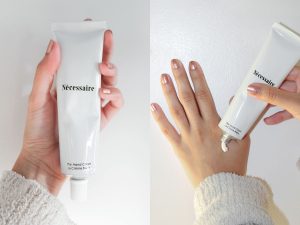
Key relevance of hand cream. Beyond just keeping hands hydrated, hand creams have many more advantages. They improve the general look of your hands, soothe and treat irritations, preserve and rebuild the skin barrier, and offer anti-aging advantages. Regardless of the situations your hands may encounter, you can guarantee that they stay healthy, young, and attractive by including hand cream on a regular basis in your skincare regimen. A high-quality hand cream is an essential ally whether you’re battling dry winter air, often washing your hands, or just want to keep your hands looking their best.
KEY RELEVANCE OF HAND CREAM
Because the hands are particularly vulnerable to dryness and early aging, hand cream hydrates, protects, and restores them intensely, making it extremely significant for skin health. It offers more nourishment and a more durable protective barrier than regular body lotion because it is made especially for the thicker skin of the hands.
1. Moisturization and Hydration;

The primary benefit of hand cream is their ability to moisturize and hydrate the skin. Hands are constantly exposed to elements that can cause dryness, such as cold weather, frequent washing, and exposure to harsh chemicals. A good hand cream replenishes the skin’s moisture barrier, keeping hands soft and supple. Ingredients like shea butter, glycerin, and hyaluronic acid are particularly effective in attracting and retaining moisture, ensuring that your hands stay hydrated throughout the day.
2. Protection and Barrier Repair;
Hand creams not only hydrate but also protect the skin by forming a barrier against environmental aggressors. This barrier helps to lock in moisture and shield the skin from pollutants, UV radiation, and other external factors that can cause damage. Additionally, hand creams can repair the skin’s natural barrier, which is often compromised by frequent handwashing and sanitizing. Ingredients like ceramides and essential fatty acids are known for their ability to restore and strengthen the skin’s protective layer.
3. Soothing and Healing Properties;

KEY RELEVANCE OF HAND CREAM
Hands can easily become irritated or inflamed due to various factors such as allergies, eczema, or contact with irritants. Hand creams often contain soothing ingredients like aloe vera, chamomile, and calendula, which help to calm irritated skin and reduce redness. Moreover, some hand creams include healing agents like vitamin E and panthenol that promote skin regeneration and repair minor cuts, cracks, and abrasions, ensuring that your hands remain healthy and resilient.
4. Anti-Aging Benefits;

KEY RELEVANCE OF HAND CREAM
The skin on our hands is often one of the first places to show signs of aging. Regular use of hand cream can help combat the effects of aging by keeping the skin nourished and firm. Many hand creams are formulated with anti-aging ingredients such as retinol, peptides, and antioxidants. These components help to reduce the appearance of fine lines, wrinkles, and age spots, and improve skin elasticity. By incorporating hand creams into your skincare routine, you can maintain youthful-looking hands for longer.
5. Hand Creams Enhances Overall Hand Appearance;

KEY RELEVANCE OF HAND CREAM
Well-moisturized hands not only feel better but also look better. Using hand cream regularly can improve the overall appearance of your hands, making them look smoother, more even-toned, and healthier. This is particularly important for individuals who work with their hands or those who want to make a good impression in professional or social settings. Hand cream with light-reflecting particles can also add a subtle glow, enhancing the natural beauty of your hands.
Summary
Hand creams provide much-needed comfort for dry, scratchy, or irritated hands, making them a mainstay in many personal care regimens. Hand creams have several advantages beyond comfort, which makes them a crucial component of skincare.